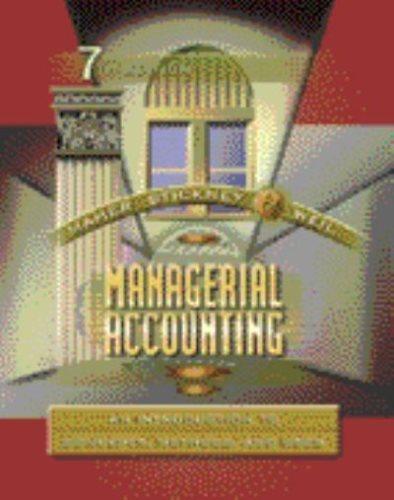Question
Context: In the last century movies were distributed one-way only: through theatres. The accounting would certainly be simpler with one outlet than it is today!
Context: In the last century movies were distributed one-way only: through theatres. The accounting would certainly be simpler with one outlet than it is today! So for this case, lets imagine we are studying one particular award-winning film, the Movie, that was a big hit in the year XXXX and was projected to generate cash flow of as much as $350 million for Viacom, Inc., Paramount Pictures' parent company. Such success would insure the film a place among the top-grossing films of all times! Times have most certainly changed!
But was the Movie a moneymaker for Paramount in year XXXX? Films were typically distributed to theatres under an agreement that splits the gross box office receipts approximately 50/50 between the theatre and the movie studio. Under such an agreement, Paramount had received $191 million in gross box office receipts from theatres as of December 31, XXXX. Paramount reports that the film cost $112 million to produce, including approximately $15.3 million each paid to the main star and the director, andproduction overhead' of $14.6 million. This production overhead is charged to the movie at a rate equal to 15% of other production costs.
Not included in the $112 million production costs were the following other expenses associated with the film. Promotion expenses incurred to advertise, premiere, screen, transport, and store the film totalled $67 million at the end of year XXXX. An additional $6.7 millionadvertising overhead charge' (equal to 10% of the $67 million promotion expenses) was charged to the film by Paramount. These charges represent the film's allocation of the studio's cost of maintaining an in-house advertising department. Paramount also charged the film a 'distribution fee' of 32% of its share of gross box office receipts. This fee is the film's allocation of the costs incurred by Paramount to maintaining its studio-wide distribution services. Finally, $6 million in interest on the $112 million in production costs were charged to the film by Paramount.
Q: In their original contracts, the main actor and director were to receive $7 million and $5 million, respectively, for their work on the Movie. However, after the studio asked the producers for budget cuts, both the main actor and director agreed to forego their standard fee for a percentage of the film's gross box office receipts. Sources estimate that the new agreement guaranteed each of the two 8% of the studio's share of gross box office receipts from the film. Using the information available about the costs of making the film, did the Movie have a positive contribution margin? Assume that all costs not specifically identified as variable are fixed. What type of business leverage does this contribution margin represent?
Step by Step Solution
There are 3 Steps involved in it
Step: 1

Get Instant Access to Expert-Tailored Solutions
See step-by-step solutions with expert insights and AI powered tools for academic success
Step: 2

Step: 3

Ace Your Homework with AI
Get the answers you need in no time with our AI-driven, step-by-step assistance
Get Started


